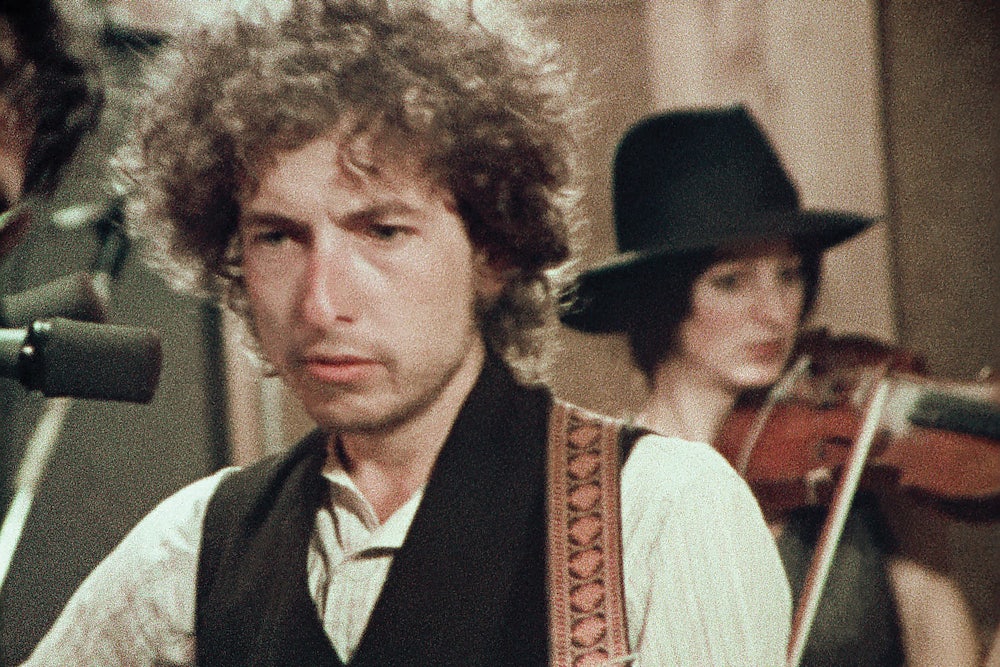In my column on Bob Dylan in last month’s issue, I offered a recitation and description of what I thought were all the Dylan concerts I attended over the course of some 40 years, numbering seven in all. But after that issue went out, while reading something about Tom Petty, I realized I had strangely forgotten one of them—strangely, because it was in retrospect possibly the most enjoyable one of all. It took place outdoors on a beautiful, warm summer night—July 29, 1986, to be exact—at the Civic Stadium athletic field in Portland, Oregon, while Dylan and Petty were on a “True Confessions” tour together, with Petty’s band the Heartbreakers providing backup for both singers. What made it especially enjoyable was that they didn’t just sing their own songs, separately and together, but a range of covers of other people’s songs. After Petty died in 2017 at the age of 66, Dylan paid tribute to him (“shocking, crushing news. I thought the world of Tom”) and sang Petty’s signature song “Learning to Fly” at his next concert.
A quick and, I think, somewhat amusing anecdote: Back when I was living in Los Angeles in the 1970s, I was very fond of Dylan’s song “To Ramona.” A woman friend of mine, who was a filmmaker, invited me to the premiere of one of her films, adding, “You know Ramona—the one you’re always singing about—is going to be there, so you should come.” And Ramona indeed was there, a charming and seemingly very bright woman, and I sat down next to her and made light conversation, and then I said, “So, I hear that you’re the Ramona that Bob Dylan wrote the song about; you know, that’s one of my favorite songs,” and she said to me, deadpan, “Yeah, well, you know, Bobby’s a pretty good lyricist.”
I’ve watched a lot of Dylan movies lately, some of them several times. One I watched for which I had very low expectations, called Bob Dylan: The Folk Years, a 2008 British release with a run time barely more than an hour, turned out to be phenomenally good. The archival footage that was gathered for this film—starting with Dylan singing contemporary folk songs in the Woody Guthrie mode in the coffeehouses of Greenwich Village and moving from there to his emergence as a songwriter of genius—demonstrates a power of vocal performance that is not captured in the film A Complete Unknown, as good as that film may be on its own terms.
But that’s not actually the film I most wish to highlight here. That would be Martin Scorsese’s Rolling Thunder Revue: A Bob Dylan Story, which, although it uses footage from Dylan’s 1975–76 tour of that name, was not released until 2019. The tour comprised two legs, the first one in the Northeast and Canada in the fall of 1975, and the second in the South and Southwest in the spring of 1976. The concept or goal of the tour was for Dylan and other vocal artists who accompanied him on various parts of the tour (such as Joan Baez, Joni Mitchell, Roger McGuinn, and Ramblin’ Jack Elliott) to play in smaller venues that usually didn’t host recording artists of their caliber, which they largely did during the first leg (resulting in the tours not being great financial successes). Many of the songs Dylan performed on the two tours were included in his album Desire, released in January 1976 and considered by Dylan aficionados to be one of his very best.
The film is known, among other things, for a certain degree of deception, but it is fairly innocent deception. For instance, it makes out that Sharon Stone was on the tour as a young woman, which is not true, and the man who is made out to be the impresario of the whole venture is not, in fact, that. So what? The important thing is the music, a key component of which is the violinist Scarlet Rivera, a name she made up for herself. Just like Dylan, she came to New York from a small town in the Midwest to make her mark in the music world. Her ambition was to adapt the violin to popular music, as opposed to the classical music it is normally associated with, and Dylan offered her the perfect opportunity to do so. He famously spotted her from his car walking a New York street, violin case in hand, asked if she actually played the instrument inside, and, when she answered in the affirmative, whisked her away to his private studio for an impromptu audition (she had been on the way to audition for someone else). That evening, at an event with Muddy Waters, he introduced her to the other musicians there as his new violinist. If you watch this film, as you should, you will forever associate it with the sounds of her violin playing.
You can also notice both the clarity and power with which Dylan sings throughout the film. There is nothing of the muffled or guttural sounds that often characterized his early work. The powerful connection between Dylan and the audiences is noted by a chauffeur driving some of the participants after a concert: “I never paid attention to the response between the audience and the people on the stage…. That to me was like a show all by itself…. It was like one battery charging another,” he comments. The poet Allen Ginsberg is in the film, and Dylan, quoting lines from him, Walt Whitman, and Robert Frost, comments that poets of today don’t reach deeply into the consciousness of people the way they once did, which brings to mind his Nobel Prize citation, for “having created new poetic expression within the great American song tradition.”
